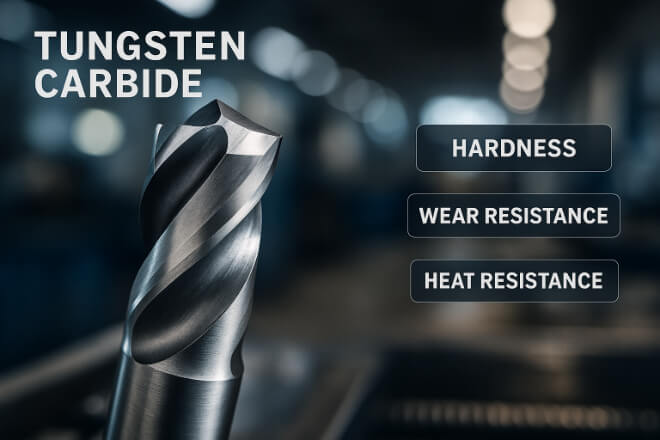什么是钢?
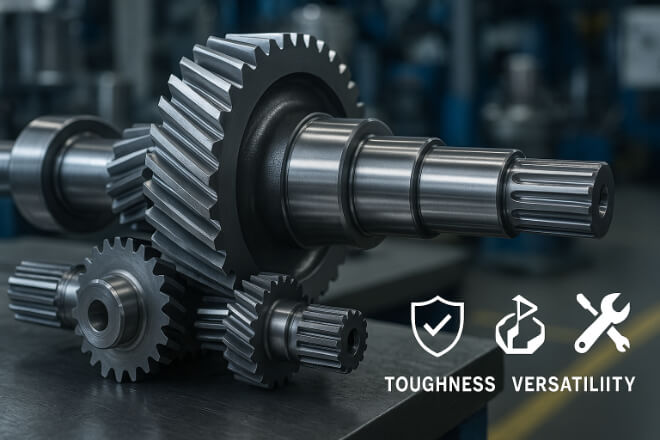
钢是一种主要由铁和碳制成的合金,通常还添加铬、镍或锰等其他元素以提高性能。
钢材因其强度高、韧性强、用途广泛而广受欢迎。与碳化钨相比,钢材也更容易加工和焊接,成本更低。
钢材的主要特性:
高的 韧性 和力量
更易于加工和成型
大型部件具有成本效益
不同用途适用不同等级(例如工具钢、不锈钢、高碳钢)
钢材广泛用于齿轮、轴、结构件和一般工程部件。
碳化钨与钢:性能比较
| 财产 | 碳化钨 | 钢 |
|---|---|---|
| 硬度 | 极高(8.5–9 莫氏硬度) | 较低(4-8 莫氏硬度,取决于等级) |
| 耐磨性 | 非常好,非常适合磨蚀性环境 | 很好,但磨损更快 |
| 耐热性 | 非常高,在高温下保持硬度 | 中等,高温下可能会失去硬度 |
| 耐腐蚀 | 高,尤其是涂层 | 各不相同——不锈钢具有良好的耐腐蚀性 |
| 韧性 | 中等(强烈冲击下可能碎裂) | 高,更适合冲击载荷 |
| 可加工性 | 困难,需要金刚石或硬质合金工具 | 使用标准工具轻松加工 |
| 成本 | 更高 | 降低 |
恶劣条件下的耐用性
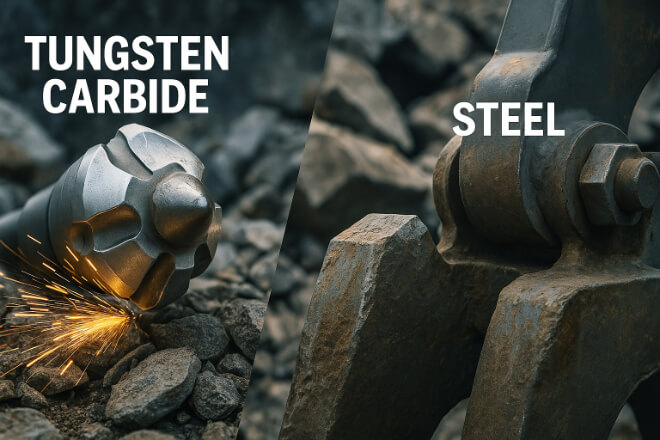
碳化钨在耐磨性和抗磨损性方面表现出色。
在采矿或金属成型领域,碳化钨制成的工具和部件的使用寿命通常比钢制工具和部件长3至10倍。这可以减少停机时间和更换成本。
然而,当零件受到重冲击或弯曲力时,钢的表现优于碳化钨。
钢铁的更高 韧性 意味着它可以吸收冲击而不会破裂,使其更适合某些结构应用。
成本考虑
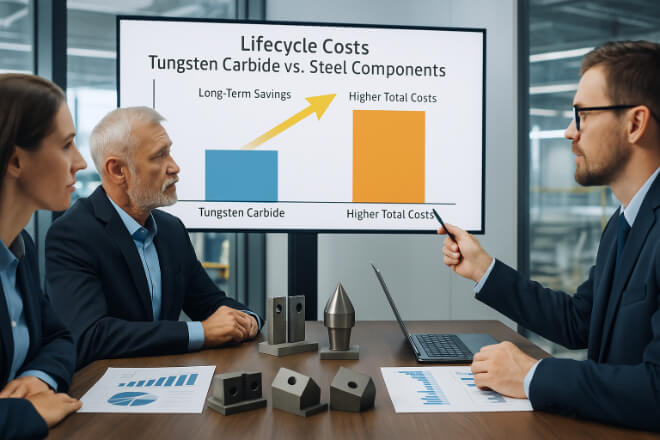
乍一看,碳化钨零件比钢制零件贵。然而,如果将整个生命周期成本(包括更换、停机和维护)考虑在内,碳化钨通常更经济实惠。
例如,碳化钨切割模具的成本可能比钢模具高出 2-3 倍,但使用寿命却长 5-10 倍,因此在许多情况下,碳化钨切割模具是更好的投资。
应用适用性
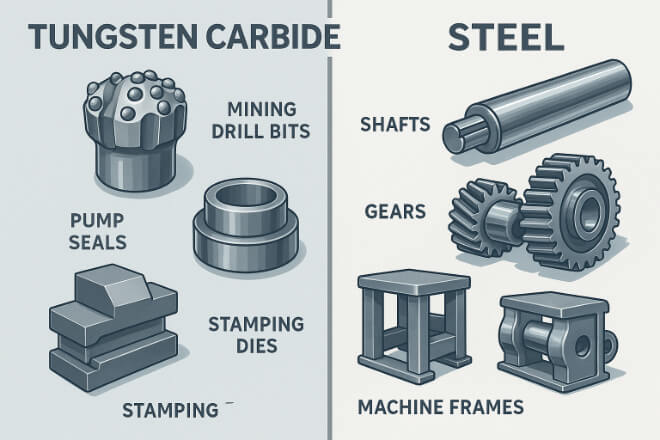
1). 何时使用碳化钨:
极度磨损
高温
精度公差
连续运行,停机时间最短
1.1).示例:
采矿钻头
泵密封 石油和天然气
金属冲压模具
木工刀片
2). 何时使用钢材:
重冲击载荷和弯曲
较低温度环境
成本是关键因素的应用
大型零件如果采用硬质合金制造则成本过高
2.1). 示例:
机架
轴和齿轮
通用结构部件
优缺点总结
| 材料 | 优点 | 缺点 |
|---|---|---|
| 碳化钨 | 耐磨性优良,硬度高,耐热、耐腐蚀性能好,寿命长 | 价格昂贵,在重击下易碎,难以加工 |
| 钢 | 韧性高、成本低、易于加工、用途广泛 | 耐磨性较低,高温下可能失去硬度,需要更多维护 |
在碳化钨和钢之间进行选择
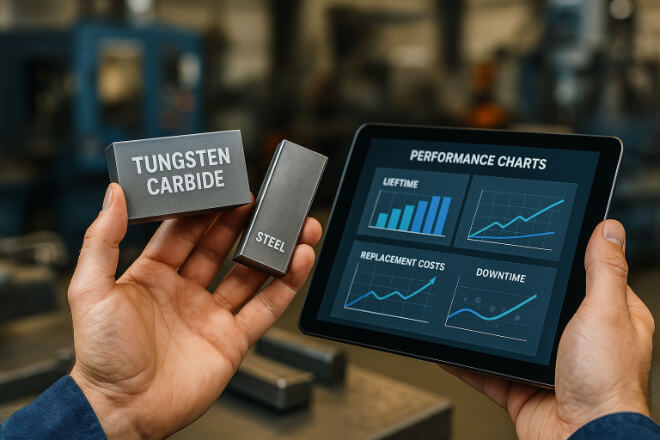
选择正确的材料取决于:
磨损类型——磨料、粘合剂、冲击或腐蚀
工作温度——高温工艺可能需要碳化物
零件尺寸——对于大型零件来说,钢材更经济
使用寿命要求——碳化物通常意味着更少的更换
预算——短期与长期成本规划
对于许多行业来说,最好的方法是组合——使用钢作为结构支撑,使用碳化钨作为磨损表面。
最大化性能的维护技巧
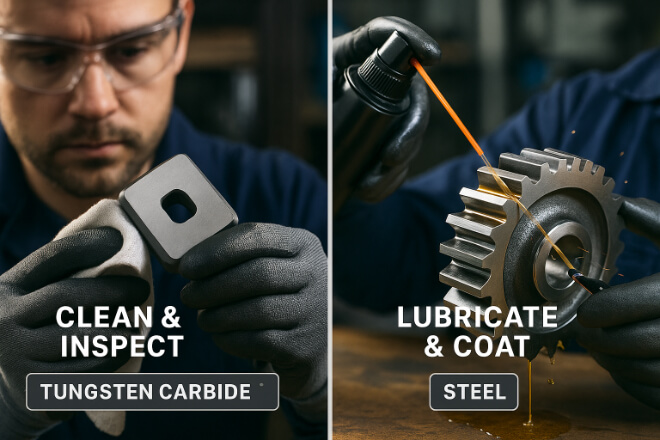
1). 对于碳化钨:
避免突然撞击
采用适当的安装方式,防止应力裂纹
定期清洁以避免化学物质腐蚀
2). 对于钢材:
涂上保护涂层以防腐蚀
保持润滑以减少磨损
定期检查是否有裂纹或变形
结论
在碳化钨与钢的争论中,没有唯一的赢家。碳化钨在耐磨性和高温应用方面占据主导地位,而钢则在结构性和高冲击力应用方面具有韧性和成本优势。
决策者应权衡总体拥有成本、性能需求和操作条件。在许多情况下,将两种材料结合在一个系统中,可以兼顾耐用性和韧性。
如果您想了解任何公司的更多详细信息,请随时 联系我们。

